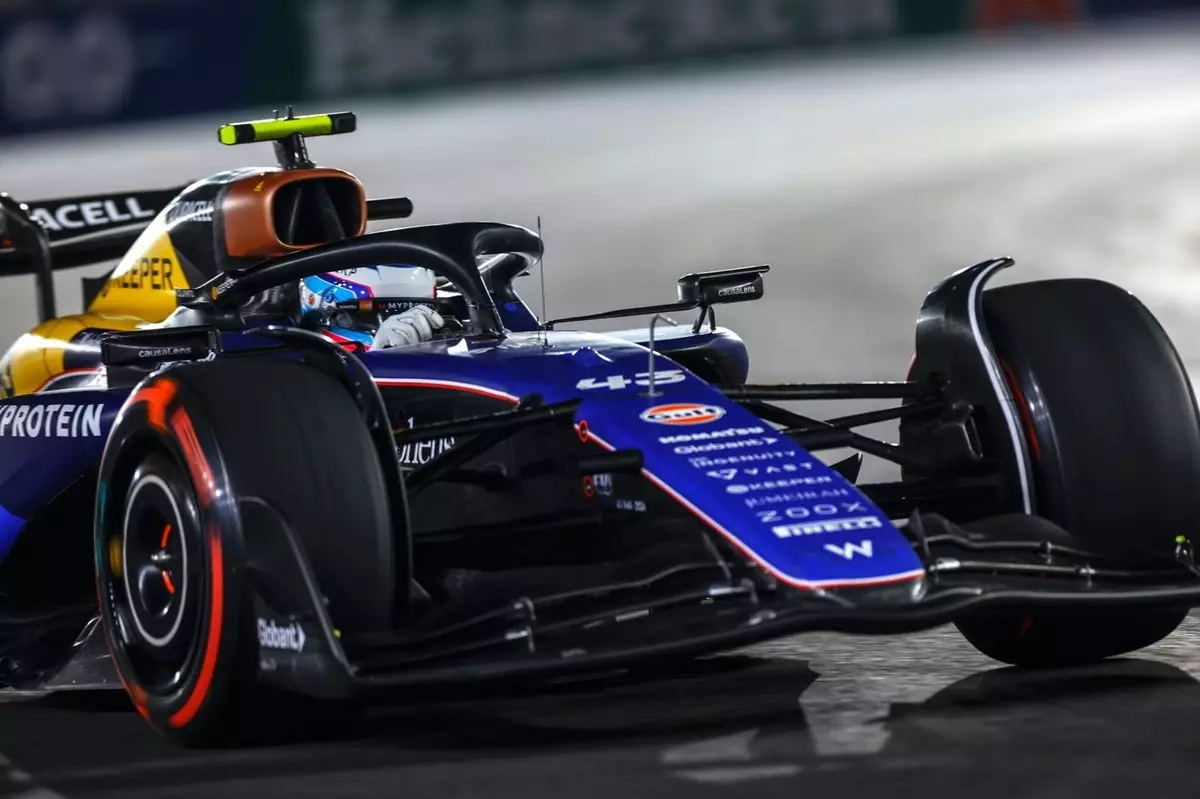Franco Colapinto’s upcoming races in the 2024 Formula 1 season have been significantly impacted by a recent misstep during the Las Vegas qualifier. The young talent suffered an unfortunate crash in Q2, which not only jeopardized his qualifying position but also forced the Williams team to revert to an outdated front suspension system for the final two races. The incident serves as a stark reminder of the inherent risks involved in high-stakes racing, where every split-second decision can have far-reaching consequences.
Colapinto’s crash has been classified as a “heavy shunt,” ultimately leading to the critical decision to replace the damaged components with those from an earlier design. This old suspension setup was initially slated for replacement during a significant upgrade at the Singapore Grand Prix, but repeated crashes throughout the season postponed its implementation. The Las Vegas incident has now compounded these challenges, forcing the Williams team into a reactive strategy rather than a proactive one.
Commentary on Team Dynamics
Colapinto noted that the team is now relying on familiar parts that have been tested before, suggesting a shift in their approach as they enter the closing stages of the season. This raises questions about the overall performance and adaptability of the Williams FW46 under the circumstances. The decision to revert to older technology inevitably sparks discussions about the team’s direction, investment in new designs, and how they recover from such adversities.
While team insiders claim that the change will only minimally affect performance, the psychological impact of using outdated components can’t be ignored. Drivers often seek incremental advancements to enhance their confidence and performance on the track. Colapinto’s sentiments highlight this struggle—expressing a collaborative mindset while grappling with the reality of racing with a less refined machine.
The Mindset of a Young Driver
During an interview in Qatar, Colapinto elaborated on his experiences in the Las Vegas qualifier. He acknowledged feeling pressure to push the limits, stating, “Q2 put me in a situation of having to push the limits a little bit more than other sessions.” This testimony indicates the level of intensity and expectation riders face in competitive environments, emphasizing how psychological factors contribute significantly to physical outcomes. With his strong performance in Q1 and the initial stages of Q2, the pressure mounted as he sought to finalize his lap times.
This moment of reflection reveals an essential factor in racing: the balance between risk and reward. Colapinto admits that taking risks proved to be detrimental in this instance, which is a crucial lesson for his career moving forward. As he adjusts to the demands of racing with an older setup, he is also tasked with understanding his driving limits, especially when compared to the potential capabilities of more advanced technology.
In the face of adversity, Franco Colapinto embodies the spirit of perseverance that defines many young drivers in Formula 1. The challenges stemming from the Las Vegas crash serve as both a setback and a learning opportunity as he prepares for the remaining races. The looming question remains: can he harness this experience to deliver exceptional results despite the limitations imposed by outdated technology? Ultimately, Colapinto’s approach may very well define not just his immediate future but also his long-term trajectory in the sport. As the season winds down, racing fans will undoubtedly keep an eye on this promising talent as he navigates the intricate dance between ambition, risk, and the unwavering quest for improvement.


Leave a Reply